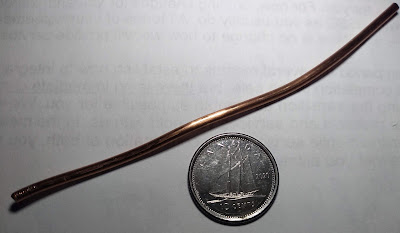Electric vehicles have an on-board charger, which converts an AC input voltage to DC to charge the batteries. These chargers are designed to accept 120 volt input for level 1 charging, and 208/240 volt input for level 2 charging. The specs for the Hyundai OBC shown above indicate it can accept a wide range of 70 to 285 Vac, allowing it to work with almost any power grid in the world. Note that it is the OBC, not the EVSE, that rectifies and boosts the voltage to charge the battery. That's why an EVSE with a 120V 5-15R plug can be connected to a 240V source.
Although the Hyundai OBC is rated for 7.2 kW of output power, getting much more than 6 kW of input power has been difficult. The first reason is that power to commercial buildings is usually 3-phase 120/208V, so charging stations usually provide 208V. At the maximum input of 32 amps, that's 6656 watts. Having used both ChargePoint and Flo charging stations, I've noticed the majority of them are limited to 30 amps for level 2 charging. Those stations rated for 30 amps use 10 AWG flexible cord, which is limited to 30 amps according to table 12 of the Canadian Electrical Code. 30 amps at 208 volts is 6240 watts. Charging at more than 30 amps requires a more expensive larger cable.
I've also found the OBC doesn't seem to pull the full amperage advertized by the EVSE. The signalling used for J1772 charging doesn't communicate a precise amperage available to the OBC. It transmits a sequence of pulses, and the duty cycle timing of the pulses indicates the available amperage. I think the OBC reduces the current by a safety margin to allow for imprecise timing of the control signal pulses. When connected to a Kyungshin IC-CPD set to 12 amps, the on-board charger draws about 11 amps.
Lastly, some charging stations don't always provide the power that they advertize. Several of the ChargePoint chargers I've encountered are Leviton 4000 units. They support 16 amps per head, or charging from a single head at 30 amps. These stations are usually listed on the ChargePoint network as 6.6 kW, but with a 208V supply, you'll never see more than 6.2 kW. When both heads are being used, your vehicle will charge at no more than 3.3 kW.
I think home charging makes a lot of sense, but I see limited value in public level 2 chargers. I am not aware of any public chargers in Nova Scotia that accept payment by credit card. They require users to first set up an account and install an app in order to active chargers. When you do get a charger working, at a charging rate of 6 kW, you can't get much of a charge while you shop at a store or eat at a restaurant. I've seen a few businesses that offer free charging for customers, but after the novelty factor of free charging wears off, I wonder how much use they will get. Since charging at home costs 18.5 c/kWh including GST, getting free charging while you shop for a half hour only saves you 50c.







